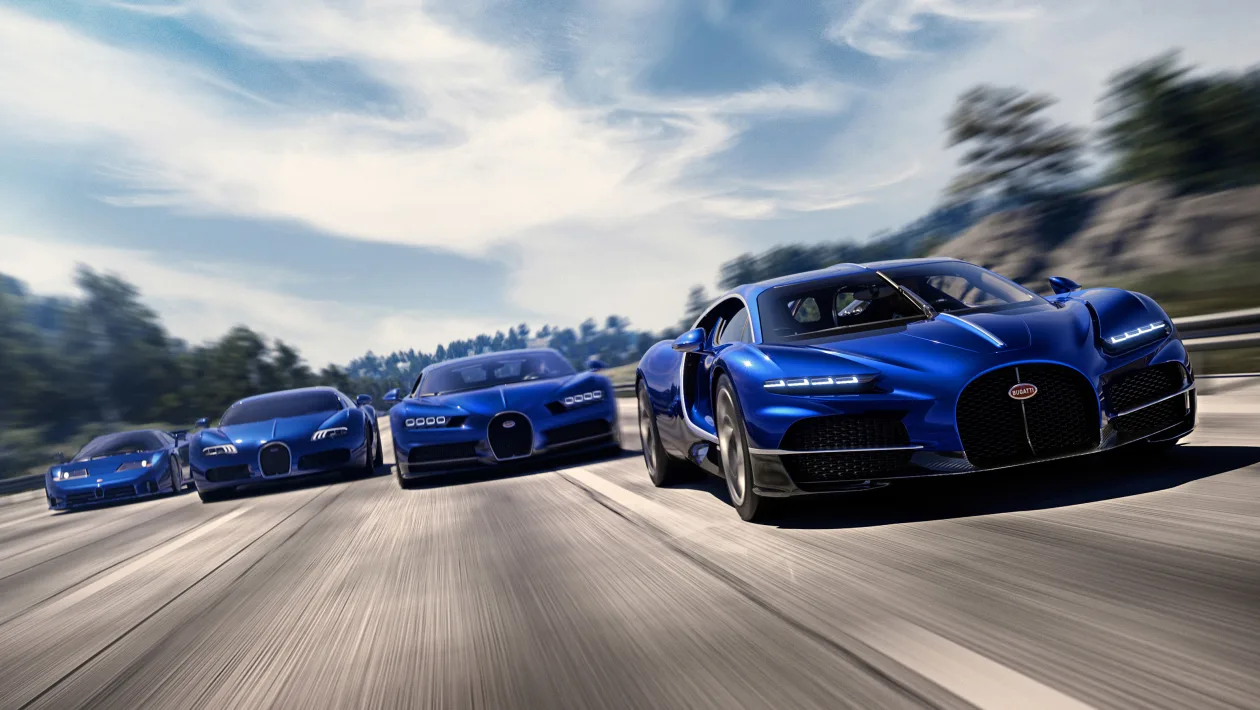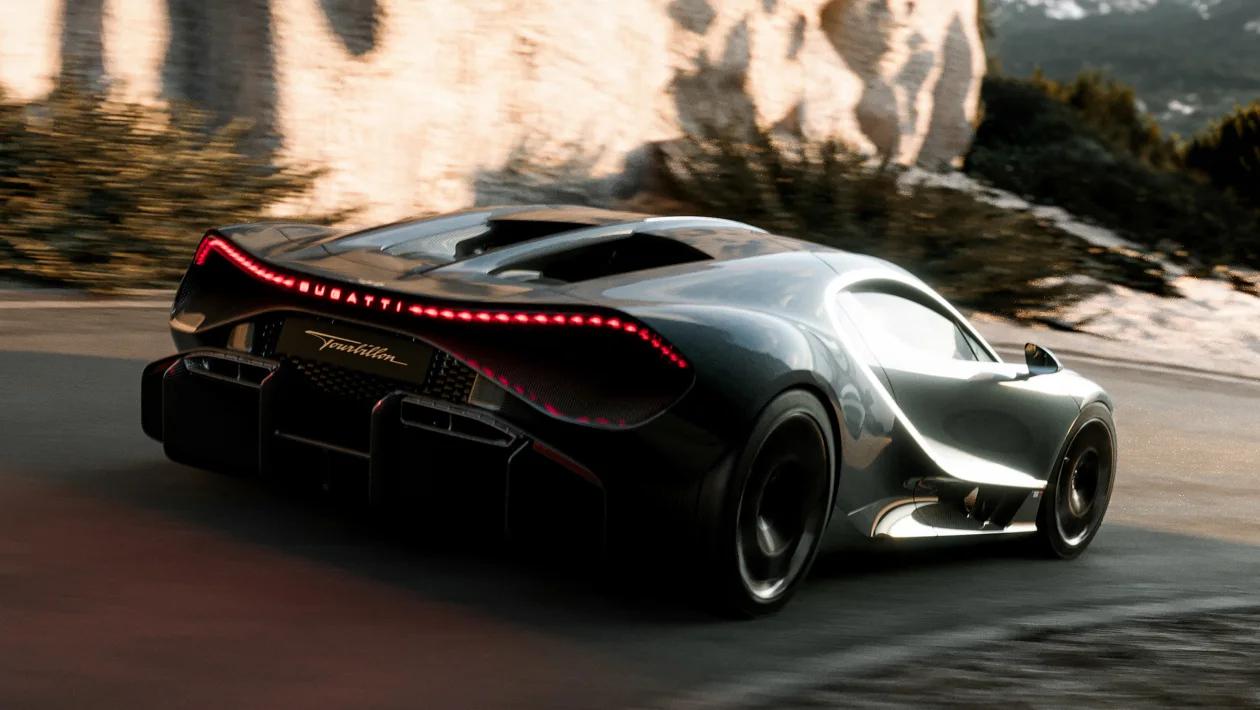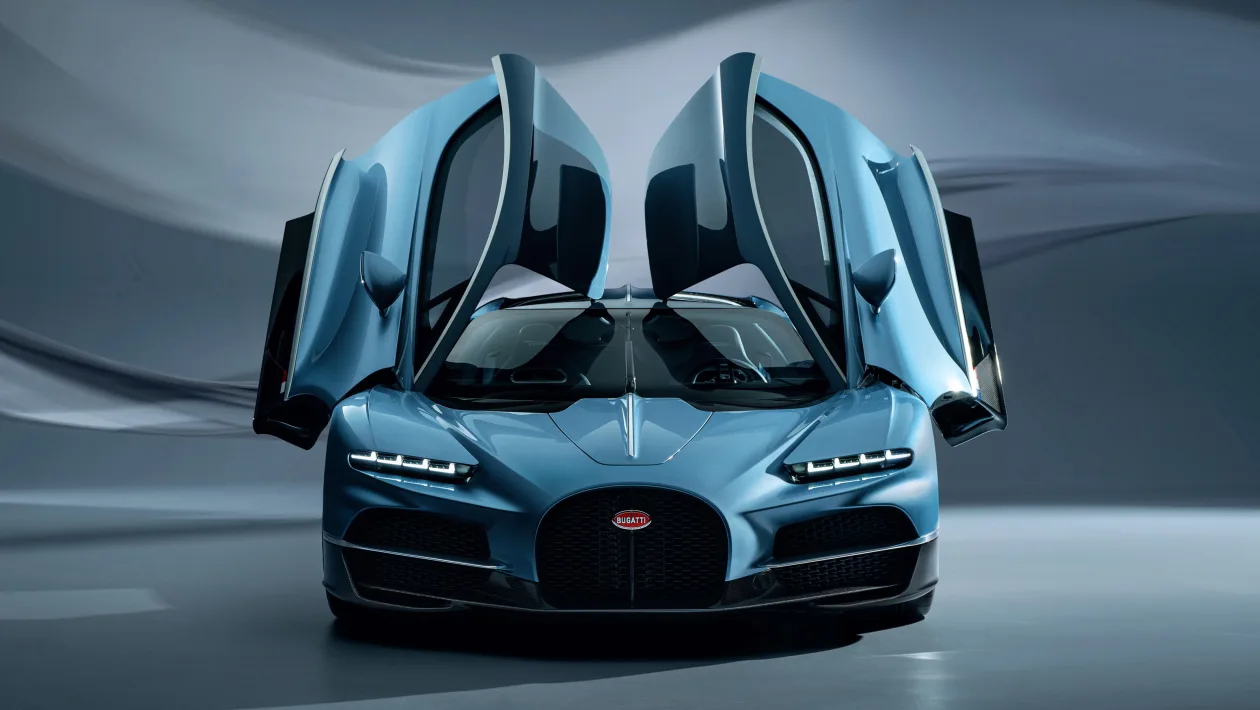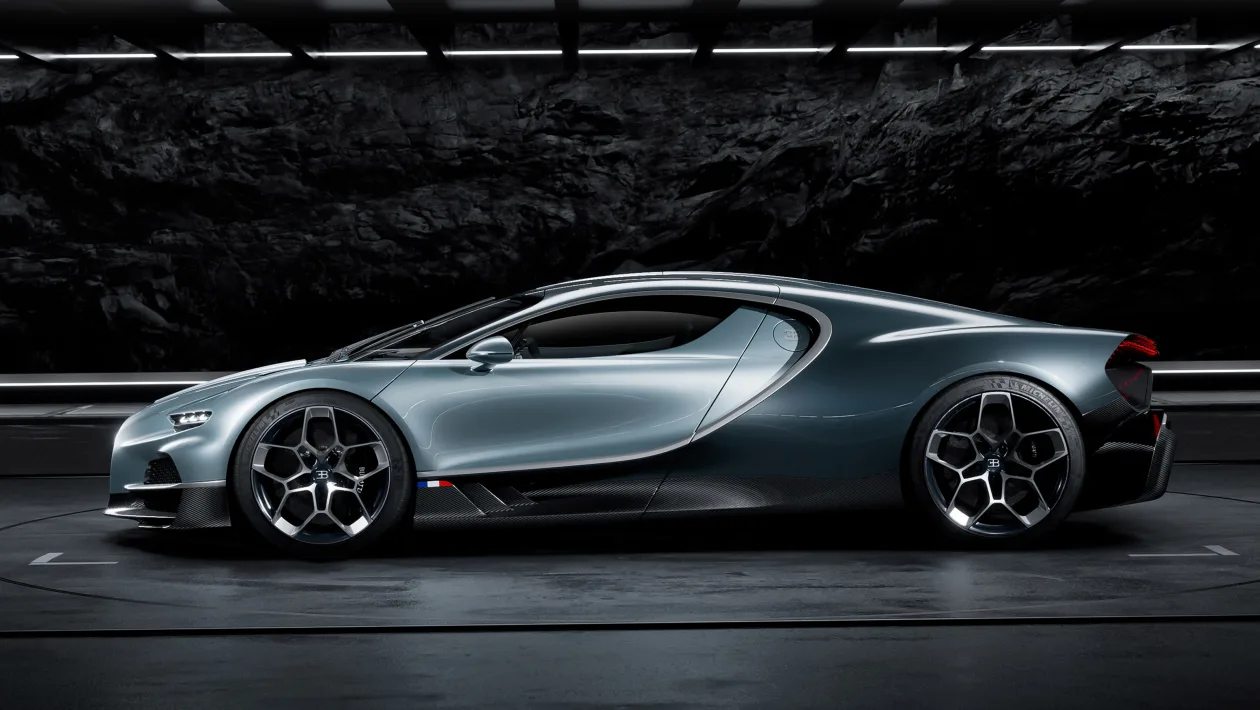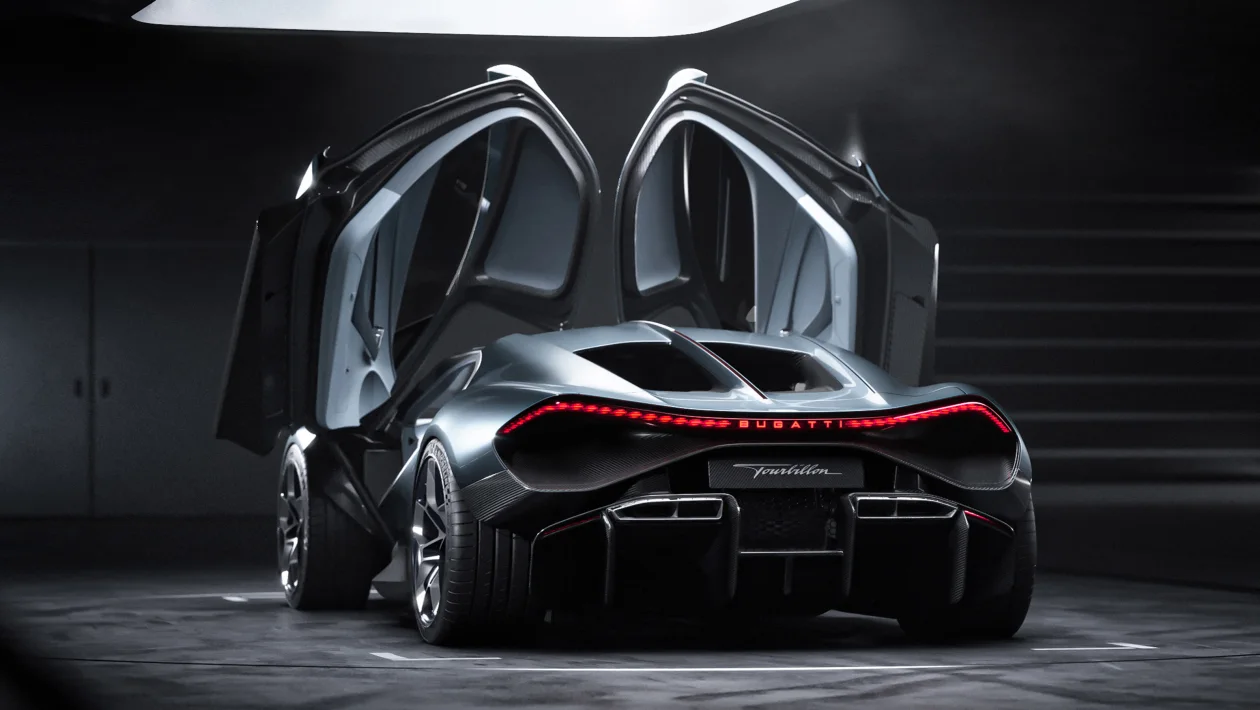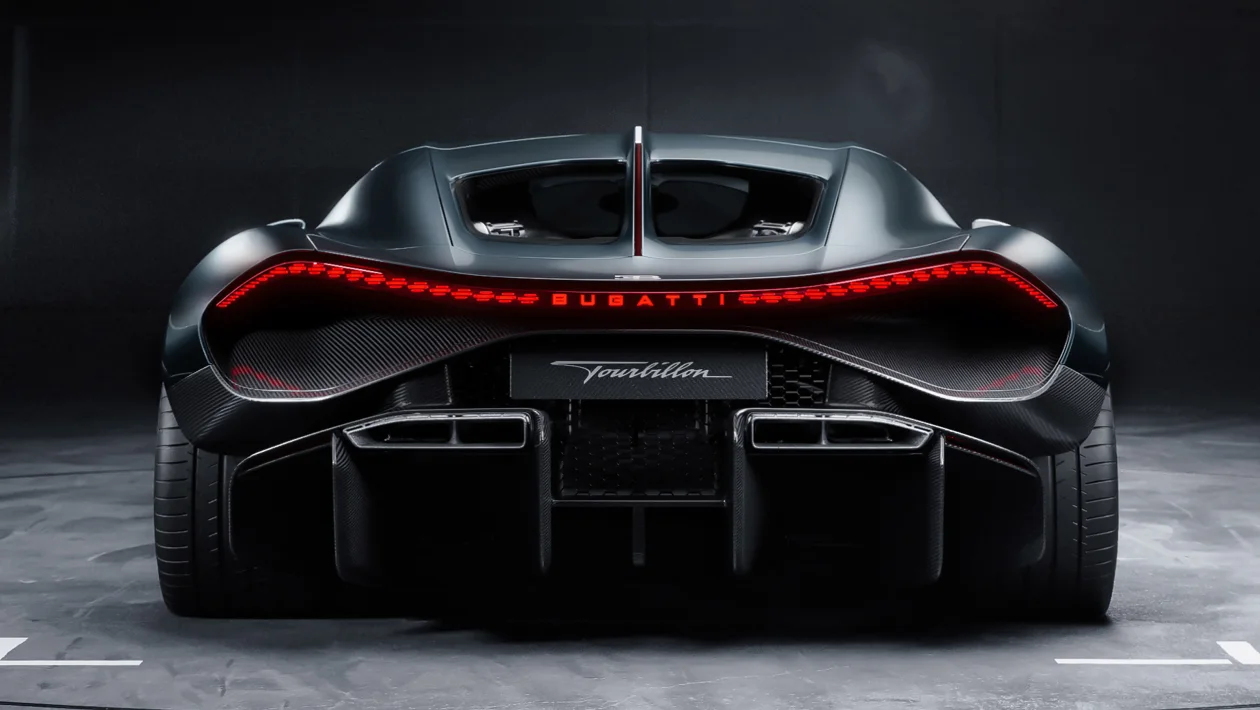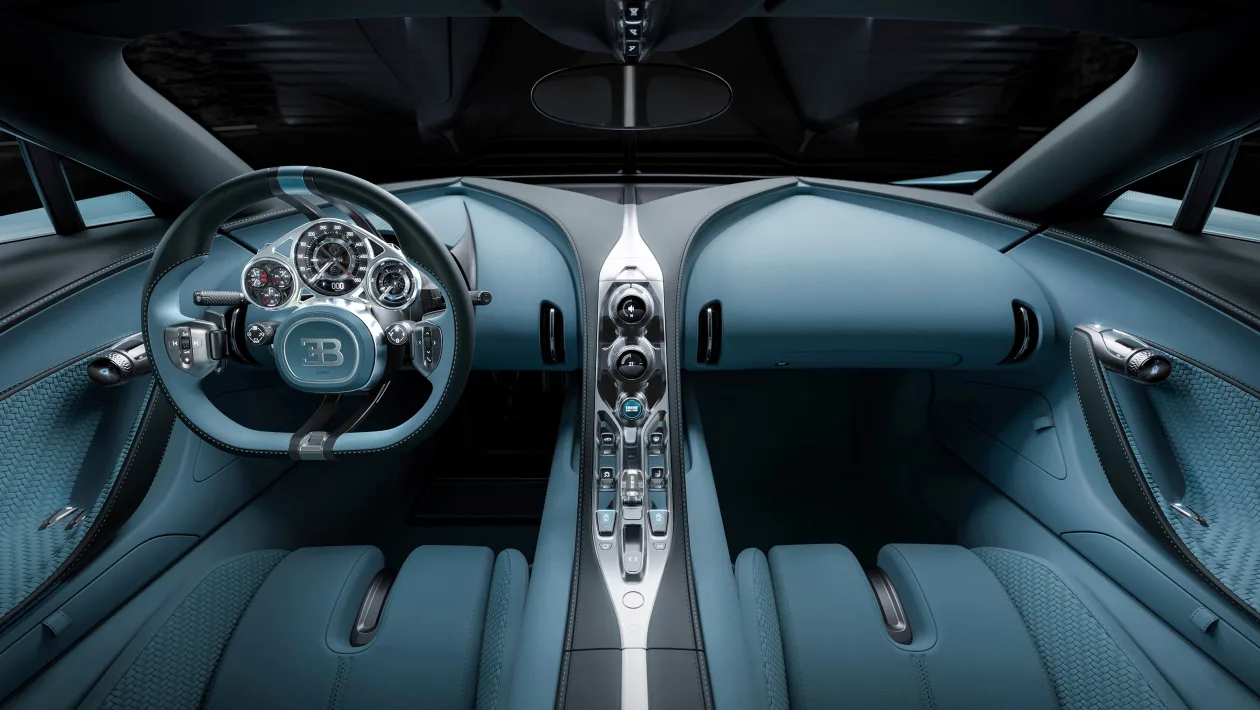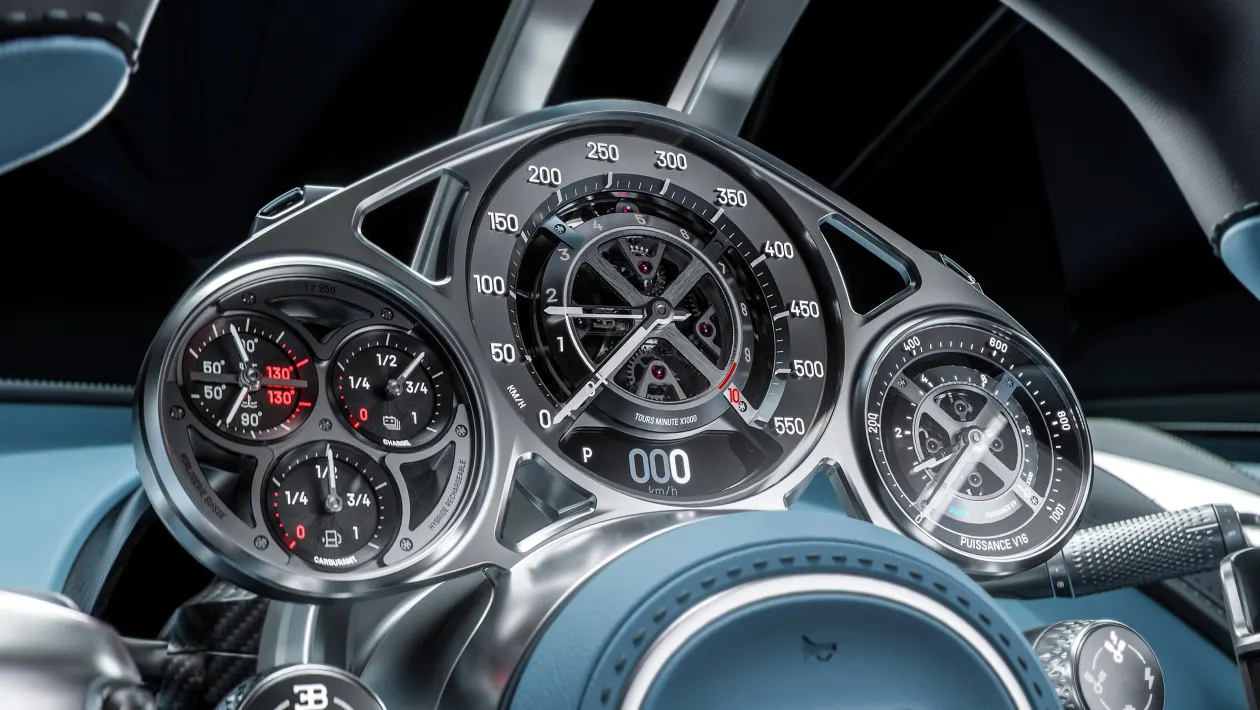1774bhp, a new naturally aspirated V16 engine and an otherworldly design mark out Bugatti’s Tourbillon hypercar
A total of 250 Bugatti Tourbillon units will be produced, and each will start $6.1 million – before tax.
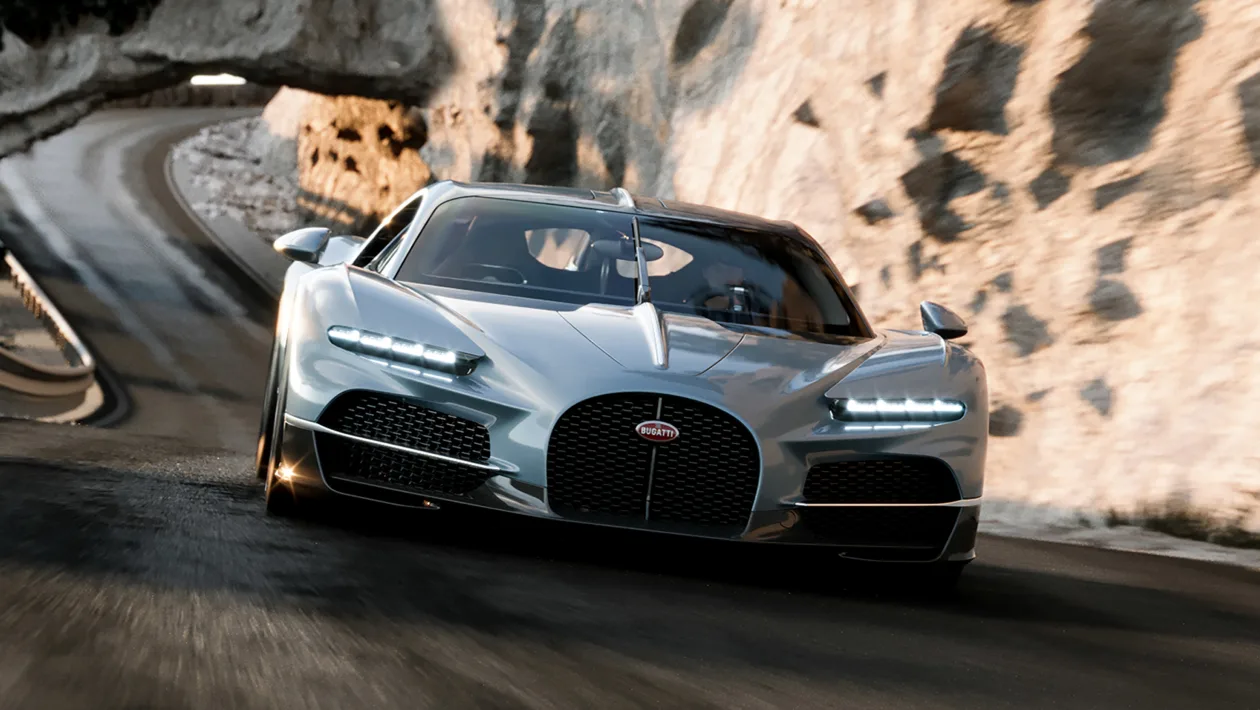
It’s not every day that a truly ‘all-new’ Bugatti is introduced.
The brand has consistently been a pioneer in the hypercar space and the new Bugatti Tourbillon is no different to the Veyron and Chiron in that it represents a huge leap forward for this most exotic of automotive genres, in pretty much every department.
Once again this is a car defined by numbers, but the means by which they are achieved is very different to before, and arguably even more impressive. Gone is the W16 engine, but Bugatti has never been disposed to downsizing and that venerable unit is replaced by an all-new, naturally aspirated V16.
For good measure, it’s assisted by a sizeable hybrid module made up of three electric motors and a 25kWh battery pack. Peak combined power is a dizzying 1774bhp (1283kW), with Bugatti confirming the Tourbillon will also come with a 37-mile electric range.
Engine and performance
The Bugatti Tourbillon’s V16 engine has been developed in collaboration with British engine wizards Cosworth, and by the time the Tourbillon reaches production in 2026 it will be the first production car to feature a V16 engine in over 85 years.
At 8.3 litres in capacity, this is a formidable powerplant able on its own to produce 987bhp (725kW) – the same output as the original Bugatti Veyron which had the assistance of a quad turbocharger layout.
Connected to this engine are three electric motors that leverage the technical prowess of electric supercar maker Rimac following its integration with Bugatti in the VW Group stable.
The first motor is sandwiched between the petrol engine and transmission, with the other two powering the purely electrified front axle in a similar fashion to the latest Lamborghini Revuelto.
Without a physical connection between the combustion engine and front axle, Bugatti has been able to use the free space inside the car’s central tunnel to house the 25kWh battery pack and many of its electronics.
The hybrid tech runs on an 800V electrical system and features the latest cutting edge advancements in electric motor technology, being among the most power dense units available. These three motors produce the remaining 788bhp (580kW) to create the Tourbillon’s astounding peak power figure.
At this stage there’s not much in the way of verified performance figures, but Bugatti says the Tourbillon will hit 100km/h in two seconds, 200km/h in under five seconds, 300km/h in under ten seconds and 400km/h in less than 25 seconds.
And what about the top speed? The Bugatti Tourbillon’s targeted top speed is 443km/h – 48km/h less than the Bugatti Chiron Supersport 300+ and a likely ramification of the electric motors and their decreasing efficacy as speeds rise to those high levels.
Chassis and suspension
To support this astounding powertrain is a brand new chassis, utilising the latest advances in material technology.
The new composite structure is built in quite a different fashion to the underpinnings of the Veyron and Chiron, with the rear crash structure made of carbon fibre and elements such as the air intakes now integral to the overall structure of the car.
The front and rear suspension is still hung on aluminium subframes, but they’re now made of new thin-wall 3D castings and utilise 3D-printing for the complex structural braces.
The same 3D printing technology has also been extensively used in the suspension. New multi-link front and rear suspension layouts replace the previous double wishbones, and all feature ‘organic’ designs that weigh 45 per cent less than the previous forged items in the Chiron.
The rear axle also features 3D printed hollow-formed arms, optimised for aero efficiency.
The brakes are carbon ceramic and are controlled by an optimised brake-by-wire system that blends the regenerative and friction braking systems. The 20- and 21-inch staggered Michelin Pilot Sport Cup 2 rubber is unique, designed specifically for the Tourbillon.
Exterior design
On first sight, you could be forgiven for thinking the Bugatti Tourbillon’s design might not be quite as dramatic of a change as the engine, but while the design themes are similar, the execution is very different.
Bugatti’s designers have leaned into its heritage by introducing a distinctive spine inspired by the one found on the 1936 Bugatti Type 57S Atlantic – a necessary addition on that car due to the inability to weld magnesium in that period.
This is further referenced through the Tourbillon’s bonnet, vertically-mounted wiper, roof trim and third brake light.
On the side there’s a classic Bugatti C-shape that still defines the car’s profile, but in place of the falling windowline seen on a Chiron is a new upward flick creating a more compact and aggressive glasshouse.
Interior and technology
Inside the Bugatti Tourbillon, the main themes from the Chiron remain with four vertically-mounted control dials and a relatively clean dash layout.
This is contrasted against an ornate steering wheel boss and instrument cluster that, like a Citroen C4 from the mid 2000s, is separated from the steering wheel itself. Unusually, the spokes are mounted at the 12- and 6-o’clock positions, with controls fixed to the static boss and on the rotating wheel.
The Tourbillon is also the first Bugatti to feature an infotainment screen, but in the attempt to keep the dash itself clean, it’s mounted on an ornate folding mechanism that can also change the screen’s orientation to portrait or landscape, depending on the use case.
Price, production and release date
There’s still quite a long road to Bugatti Tourbillon entering production, as the brand still needs to complete manufacturing of the last Chirons.
Production of the new model won’t commence until 2026.
A total of 250 Bugatti Tourbillon units will be produced, and each will start at 3.8million euros ($6.1m AUD), before tax.
Variants, derivatives and special editions will of course follow, but for now consider Bugatti’s new era officially underway.
Jordan Katsianis & Auto Daily




